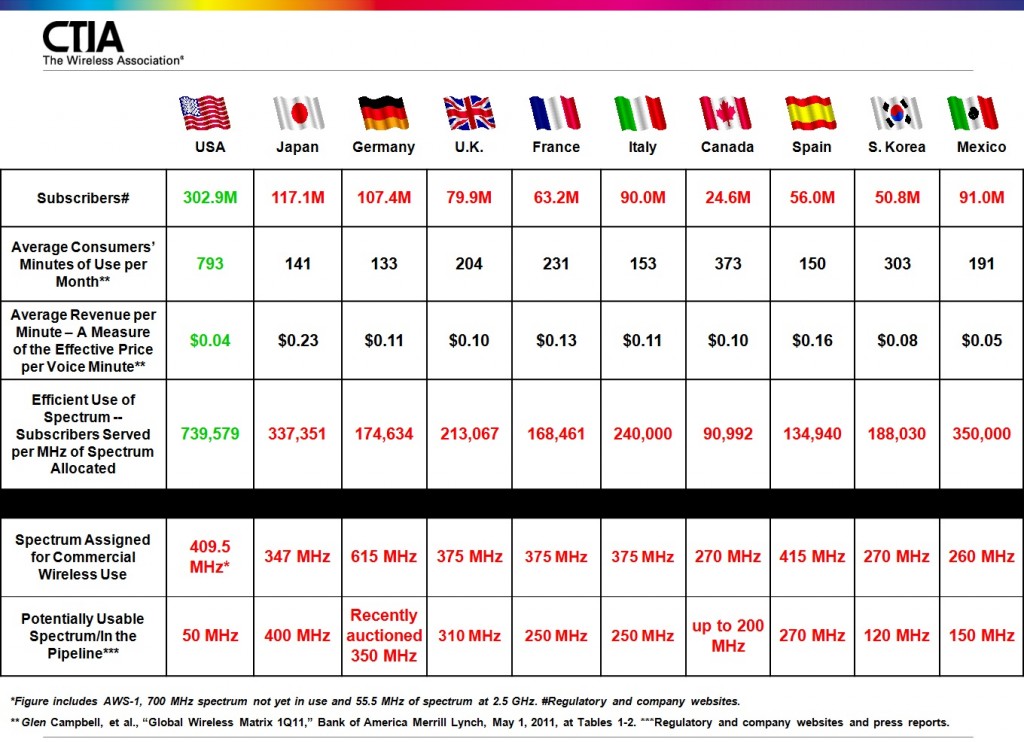In the FCC’s incentive spectrum auction proceeding, Information Age Economics (IAE) complains about the reliance of some in the industry (CTIA and Verizon, to name a couple) on a spectrum efficiency metric that simply divides an operator’s nationwide spectrum holdings by the number of subscribers. This results, in one example they give, of Sprint having 3.57 Hz per subscriber and Verizon having 1.05 Hz per subscriber. Some take this as Verizon using spectrum more efficiently, and perhaps being at a disadvantage. As IAE points out, however, spectrum is not partitioned to users this way: cellular infrastructure allows for frequency reuse. If one wants to compare the spectrum efficiency of Sprint and Verizon, don’t look at it nationwide — look at, say, Washington, D.C.
The population/MHz metric is taken to a more absurd level when comparing the spectrum efficiency — or not — among countries. Here, the culprit is CTIA’s international comparison chart, which I questioned in 2011, saying it didn’t make sense to me. IAE observes some of the nonsensical results this metric produces:
- Canada is less than one eighth as efficient as the U.S. and Mexico is over 3.5 times more efficient than Canada.
- Mexico is almost twice as efficient as Germany.
- India is over 60% more efficient than China, which is itself over three times more efficient than the U.S., and China Mobile is similarly over 3 times more efficient than Verizon.
- India is over 11 times more efficient than Japan.

As spectrum expert Michael Marcus observes on this matter, “spectrum lobbyists are reducing arguments to absurdity.”